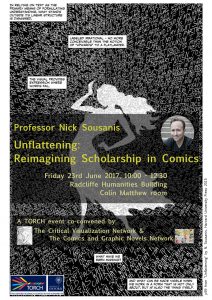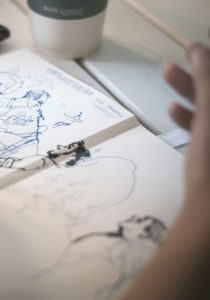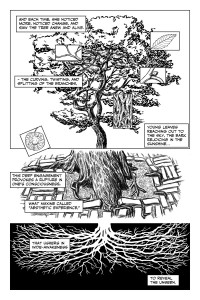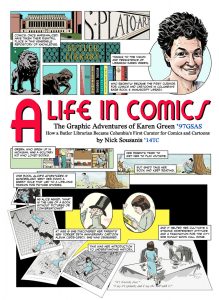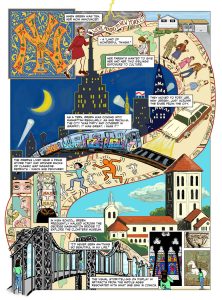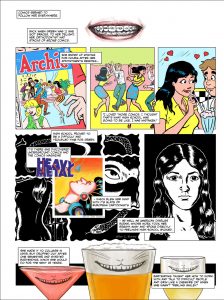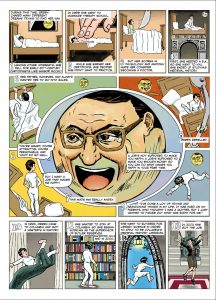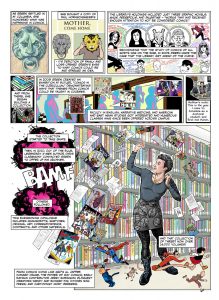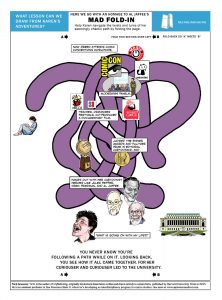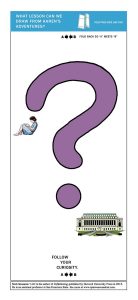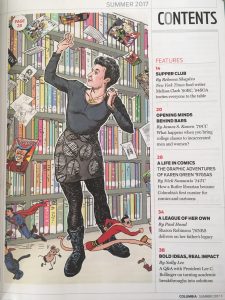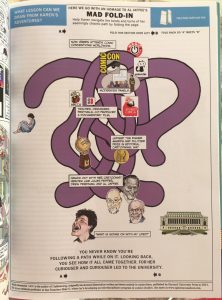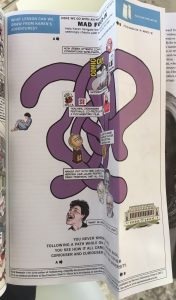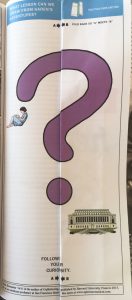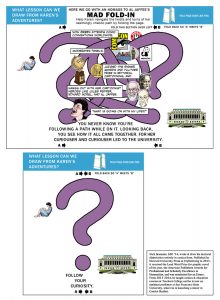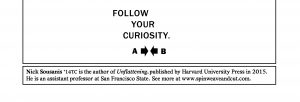As semester has finally wrapped, an update of a few things including the release of a new comic(!) I’m really thrilled to finally be able to share! And note I’ll be posting an overview of what we did in my comics classes in a post in the near future.
Can we move past more narrowly conceived notions of explanatory narratives to imagine comics that thrive in the, and do less telling, and more showing? (This is not necessarily a call for words, rather a deep consideration of how text is incorporated into the visual that is the comics page.) … I see in this nascent moment for comics, an opportunity to expand the possibilities forward and experiment with just what a comic can be. Key to this is that making and other complex subject matter into comics is a simple matter of translation: adding illustrations to existing text. Rather, this a different kind of thinking altogether, one necessarily immersed in the visual the ground up. As the cartoonist Seth I think quite correctly observed, comics less a combination of prose and illustration, but instead better thought of as blending of poetry and graphic design. This kind of spatialized thinking that defines comics is particularly well-suited to wrestle with complex and abstract concepts, where their capacity to simultaneously present multiple perspectives can be used to bring great depth to our investigations far exceeding the apparent limitations of their static form. … Our goals, as I see them, are to inform and bring people into important conversations. This is not something to achieve by dumbing the down, rather through the much more difficult work of making the concepts real, tangible, meaningful, and relatable. We strive to make good comics that make for an engaging and educational reading experience. With the stakes so great for our future, there is a deep need to effectively convey the complex issues we face. Comics have an extremely important role to play in communicating them, and I look forward to the inventive and varied approaches to come.
Science meets Comics.- Proceedings of the Symposium on Communicating and Designing the Future of Food in the Anthropocene was organized/edited by Reinhold Leinfelder, Alexandra Hamann, Jens Kirstein, Marc Schleunitz and features contributions from Jaqueline Berndt, Anne-Kathrin Kuhlemann, Toni Meier, Veronika Mischitz, Stephan Packard, Lukas Plank, Nick Sousanis, Katerina Teaiwa, and Arnold van Huis. The 117 page document is available in print from the publisher Christian Bachmann here and online as an open access book (and downloadable) here.
Ok, excited to share my new comic – profile of Columbia University’s comics librarian extraordinaire
Karen Green – done in
comics for Columbia Magazine! While only six pages long, this proved to be a huge undertaking – i was working on it December through March, and it was just published this week. When first approached to do this project, I was hesitant. Although I’m good friends with Karen and she was a great colleague while I was doing my doctoral work, biographies are not really the sort of comic I make. But then I got the idea to tell her story through homages to all the comics she read growing up and through adulthood – and that got me excited for the challenge (I did do one
autobiographical piece a long time back that touched upon somewhat similar terrain). And it was a challenge – the amount of reference material for this short piece are kind of ridiculous but once you’ve committed to this path – can’t really stop walking. The comic draws on her lifelong fascination with Alice in Wonderland in a few places, the New Yorker, the Bayeux Tapestry, Archie, Little Nemo, Charles Burns, and the crowning achievement of the piece – a riff on Al Jaffee’s legendary Mad Fold-Ins! (See a
recent interview with Jaffee here.) Although this final page was the quickest to draw in the end, it was by far the hardest to figure out. I had to take words that she’d said in a text interview with her and my follow up questions and have them somehow fold into her advice on how live your life with equally meaningful imagery! I was thrilled to finally hit upon a solution (and trying to make one of these should give you huge appreciation for Jaffee’s genius in figuring these out month in and month out over decades!) and pleased with how the whole thing came together. The making of it in turn gave me some prompts for things to try with my Making Comics class this past term (and those I’ll share sometime soon). I was fortunate that Karen and I were in
Angoulême at the same time, so I got to get some live references and posing for the piece while I was in the midst of it. (See more on
Karen here.)
After completing that final fold-in page, editors at Columbia suggested that rather than do it as I had – with both the regular and folded versions on the same page (I’d assumed they wouldn’t want their readers to fold it) that I should just go ahead and make it the full page and let readers figure it out and bend up their magazines. This meant some retooling and figuring out how to make my bio work both as full width of the page and folded too! Have a look at the pages here and you can see the piece on
Columbia Magazine’s site (and in print!) here. Karen has done extraordinary work for comics at Columbia and the comics community at large (she’s been an Eisner judge, moderated innumerable panels, co-produced She Makes Comics, …) – so I was pleased to make this tribute to her career and had a blast working in all the different styles the piece required.
And here’s the first version of the final page (which was near completion when the decision to make it full page came in). I’m grateful editorial suggested giving it the full page – much more satisfying finale. And (update), i got a print copy of it! And tried out the fold-in for the first time! Geeked to see it work for real – and more impressed with Al Jaffee! Pleased to have new work out and eager to get to a bigger project ahead… – N



